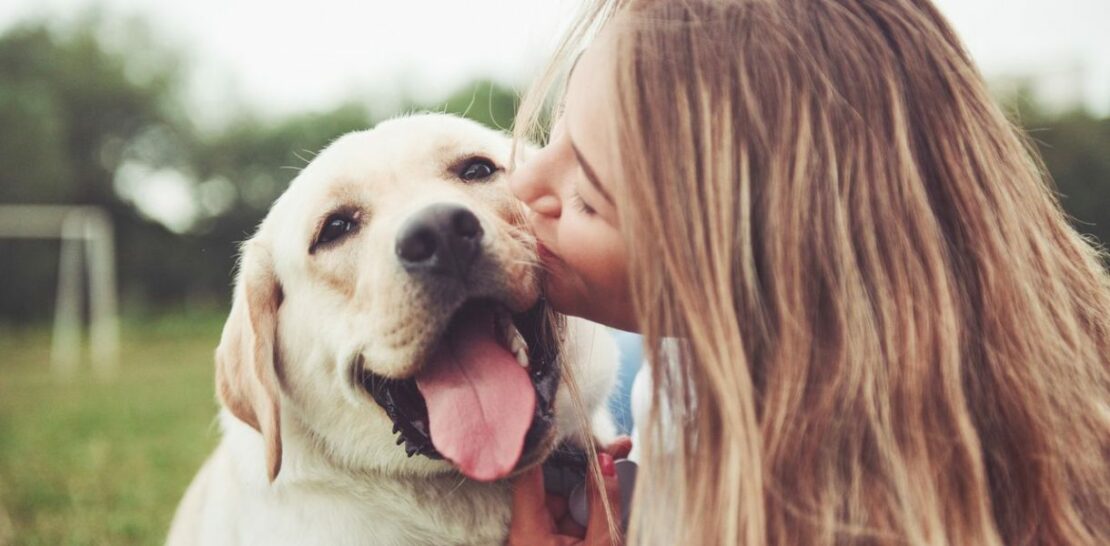As a devoted dog owner, you’re always on the lookout for ways to demonstrate your love and appreciation for your canine companion.
After all, your dog is more than just a pet – they are a cherished member of your family, a loyal friend, and a constant source of joy.
But are you really doing everything you can to show your dog just how much you care?
In this comprehensive guide, we will explore 10 of the best ways to express your love and strengthen the bond between you and your furry friend.
From nutritious meals and engaging activities to effective communication and consistent training, these tips will help you create a nurturing environment where your dog can thrive.
1. Provide a Nutritious and Balanced Diet
A dog’s overall well-being is directly linked to the quality of their diet, so it’s crucial to ensure they are receiving the necessary nutrients to maintain optimal health.
Choose high-quality dog food: When selecting a dog food, opt for products that contain natural, wholesome ingredients and avoid those with artificial additives, preservatives, or fillers. Look for brands that use real meats, whole grains, and fresh fruits and vegetables in their recipes.
Consult your veterinarian: Each dog has unique nutritional needs based on factors such as age, breed, weight, and activity level. Consult your veterinarian to determine the appropriate diet plan for your dog, and be sure to monitor their weight and adjust feeding portions accordingly.
Offer healthy treats and supplements: Treats can be a great way to reward your dog, but be mindful of the quality and quantity. Choose treats made from natural ingredients, and consider incorporating supplements like fish oil or glucosamine to support your dog’s overall health.
2. Ensure Regular Exercise and Mental Stimulation
Physical activity and mental engagement are essential components of a dog’s daily routine, as they help maintain a healthy weight, strengthen muscles, and prevent boredom.
- Daily walks: Schedule routine walks to provide your dog with consistent exercise, fresh air, and opportunities to socialize with other dogs and people.
- Playtime: Engage your dog in interactive play sessions using toys like balls, tug ropes, and fetch toys to keep their minds and bodies active.
- Training exercises: Incorporate obedience training and mental challenges such as puzzle toys or scent-based games into your dog’s daily routine to stimulate their cognitive abilities.
3. Establish Consistent Training and Boundaries
Training is not only about teaching your dog manners and obedience; it’s also a vital tool for building trust, mutual respect, and a strong bond between you and your dog.
- Use positive reinforcement: Reward your dog with treats, praise, or affection for displaying desired behaviors, and avoid harsh punishment or scolding, which can create fear and damage the bond you share.
- Be patient and consistent: Remember that training takes time and repetition, so remain patient and consistent in your approach, and always reinforce good habits and routines.
- Enroll in training classes: Consider enrolling your dog in a training class to learn new skills, strengthen your bond, and receive guidance from a professional trainer.
4. Offer a Comfortable Living Environment
A safe, comfortable, and clean living space is essential for your dog’s overall well-being and happiness. Take the necessary steps to create a welcoming environment that caters to your dog’s needs and preferences.
Provide a cozy sleeping area: Ensure your dog has a comfortable bed, preferably in a quiet corner of your home where they can rest undisturbed.
Maintain cleanliness: Regularly clean your dog’s living area, including their bed, toys, and food and water dishes, to prevent the accumulation of dirt, bacteria, and odors.
Consider your dog’s unique needs: Be mindful of your dog’s breed, age, and physical limitations when designing their living space, and make necessary adjustments to accommodate their needs, such as adding ramps for senior dogs or providing ample space for large breeds to move around comfortably.
5. Prioritize Regular Veterinary Care
Regular veterinary check-ups are crucial for maintaining your dog’s health and detecting potential health issues early.Develop a proactive approach to your dog’s healthcare by scheduling routine visits and following your veterinarian’s recommendations.
Annual exams: Schedule yearly check-ups with your veterinarian to assess your dog’s overall health, update vaccinations, and address any concerns or issues.
Dental care: Dental health is often overlooked but plays a significant role in your dog’s overall well-being. Request a dental examination during your dog’s annual check-up and establish a home dental care routine to prevent dental diseases.
Preventative care: Work closely with your veterinarian to develop a preventative care plan for your dog, including regular heartworm testing, flea and tick prevention, and age-appropriate screenings for common health issues.
6. Cultivate Effective Communication
Developing a strong understanding of your dog’s body language and vocalizations is essential for building a trusting relationship and effectively addressing their needs and emotions.
- Observe body language: Pay close attention to your dog’s body language, such as tail positioning, ear movement, and facial expressions, to better understand their emotions and anticipate their needs.
- Listen to vocalizations: Familiarize yourself with your dog’s various sounds, such as barks, whines, and growls, to identify their specific needs or concerns in different situations.
- Respond appropriately: Once you’ve identified your dog’s signals, respond promptly and appropriately to meet their needs and reinforce open communication.
7. Create Socialization Opportunities
Socializing your dog with other dogs, people, and environments is crucial for their mental well-being and confidence. Expose your dog to a variety of situations to help them become well-rounded, adaptable, and comfortable in different settings.
- Puppy socialization classes: Enroll your puppy in a socialization class to expose them to other dogs, people, and environments in a controlled setting.
- Arrange playdates: Set up playdates with other dog owners to provide your dog with opportunities to interact with different dogs and develop social skills.
- Explore new environments: Take your dog to different settings, such as parks, pet-friendly stores, or outdoor events, to expose them to various sights, sounds, and experiences.
8. Show Affection and Praise
Physical touch and verbal praise are powerful ways to express your love and appreciation for your dog and strengthen your emotional connection.
- Cuddle and pet your dog: Take time each day to cuddle, pet, or stroke your dog to provide them with physical comfort and reassurance.
- Offer verbal praise: Speak to your dog in a loving, positive tone to reinforce good behavior and express your affection.
- Develop a unique bond: Discover activities or rituals that are special to you and your dog, such as a specific greeting or bedtime routine, to create a deeper emotional connection.
9. Prioritize Safety and Well-being
Ensuring your dog’s safety and well-being is a fundamental aspect of responsible pet ownership and demonstrates your commitment to their happiness and longevity.
Microchip and ID tags: Microchip your dog and provide them with a collar and ID tag displaying your contact information in case they become lost or separated from you.
Implement safety measures: Take necessary precautions to protect your dog from potential hazards, such as securing your home and yard, using a leash during walks, and monitoring their interactions with other animals.
Prepare for emergencies: Develop an emergency plan for your dog, including assembling a pet first aid kit, identifying nearby emergency veterinary clinics, and familiarizing yourself with basic first aid procedures.
10. Invest Time and Attention
Perhaps the most valuable way to show your dog you care is by dedicating your time and attention to them, as these are the essential building blocks of a strong, lasting bond.
- Quality time: Spend quality time with your dog each day, engaging in activities they enjoy and providing them with your undivided attention.
- Be present: Be mindful of your dog’s needs and emotions, and respond with empathy and understanding to create a supportive, nurturing relationship.
- Include your dog in daily activities: Incorporate your dog into your daily routine, such as including them in family outings or involving them in household chores, to help them feel like an integral part of your life.
- Set aside dedicated playtime: Establish regular play sessions with your dog, using a variety of toys and games to keep them engaged and entertained.
In conclusion, showing your dog that you care involves a multifaceted approach that encompasses their physical, mental, and emotional needs. By providing a nutritious diet, ensuring regular exercise and mental stimulation, establishing consistent training and boundaries, offering a comfortable living environment, prioritizing regular veterinary care, cultivating effective communication, creating socialization opportunities, expressing affection and praise, prioritizing safety and well-being, and investing time and attention, you can demonstrate your love and appreciation for your canine companion. Implementing these 10 remarkable ways into your daily routine will not only strengthen the bond between you and your dog but also create a nurturing environment in which your beloved pet can thrive and flourish.




